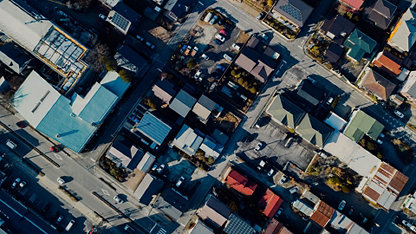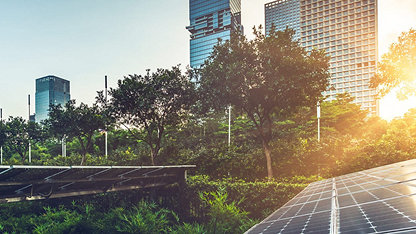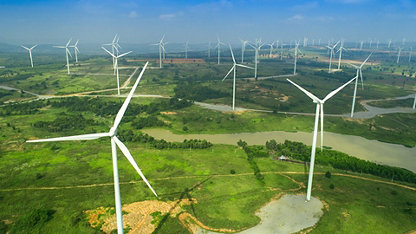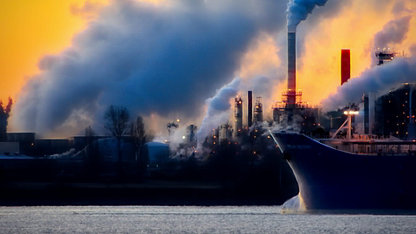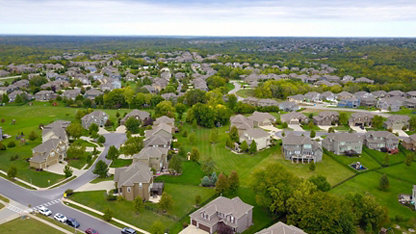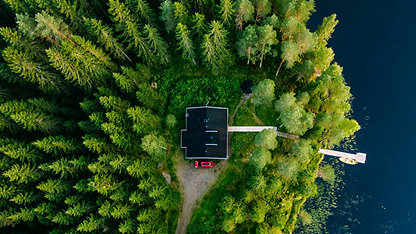If global temperatures increase beyond 2ºC by 2100, sea levels could rise by two metres. What would that mean for coastal cities like Lagos, Tokyo, Dhaka and Miami?
Lagos, Nigeria
Fight the water with concrete, or rise above it?
The super-rich of Lagos are being invited to turn their backs on their city. Instead of enduring the massive traffic jams, incessant floods, deadly heat, endless slums and gross air pollution of Africa’s largest metropolis, they are heading off-shore to what’s being billed as the “best prime real estate in west Africa”.
Eko Atlantic City, claims the developer of this 3.86 square mile (10 km2) waterfront district reclaimed from the sea off Victoria Island, is Nigeria’s answer to climate change and sea level rise. It is a place where 250,000 people can live in private luxury, surrounded by a 4.4 mile (7km) concrete sea wall over which the waves will never crash.
With a new financial quarter, its own power grid, renewable energy, high-tech housing and shopping malls, it is billed as a model of how other coastal cities can fortify themselves against sea level rise, and how companies and people can escape the global ecological crisis.
The concrete perimeter wall, dubbed “the great wall of Lagos”, is said to be able to withstand sea level rises of several feet and the worst storm imaginable in 1,000 years. But the 90m m3 of sand dredged from the shallow ocean off Lagos has already been blamed for changing the direction and impact of storm surges, and for increased flooding in the city’s poorest areas.
Lagos, which has grown from fewer than 1 million people in 1950 to more than 25 million today, and is still expanding, is built across islands and lagoons, but its future is perilous. Over 70% of its 12 million inhabitants live in slums, most of which are less than 2m above sea level. According to the Nigerian meteorological service, the city is already experiencing more intense heat, rainfall and flooding than it did just 20 years ago, and can expect increasingly extreme weather.
If temperatures rise by 2ºC – the minimum expected by the UN’s climate body, the Intergovernmental Panel on Climate Change (IPCC) in its last global assessment – then sea levels along the west African coast can expect to rise 20-40cm by the mid century. If temperatures increase by as much as 4-5ºC, then sea levels would drown much of Lagos, Port Harcourt and other Nigerian ports.
Lagos is both one of the richest and poorest cities in the world, and one of its slums provides a model for a climate-resilient city, says Nigerian environmentalist Nnimmo Bassey. Makoko, a settlement of around 100,000 people, is built over the water, with pipes for clean water paid for and laid by its enterprising residents. “It shows us how to face sea level rise and deflect its sting. It is the perfect example of how coastal cities can respond to global warming. It shows that cities do not have to be in a straitjacket where the only solution is concrete, more concrete, and more cement”, he says.
Tokyo, Japan
Too important to be left to drown
Many coastal cities in poor countries will drown because they do not have the resources to hold back sea-level rise. But Tokyo, the world’s most populous metropolis, plans to engineer itself out of the problem to protect its 38 million residents.
Four rivers flow through the megacity and in 2006 it spent $4bn building the world’s largest underground cistern to hold flood water. But that is now seen as inadequate and, as heavy rainfall linked to climate change increases and sea levels rise, the city is debating whether to build 336 miles (540km) of “super levees” along its river banks, as well as a massive sea barrier costing tens of billions of dollars at the mouth of the Bay of Tokyo to hold back potentially catastrophic storm surges.
The stakes are high. Large areas of the city lie below sea level and are only protected by ageing dykes. A 2ºC temperature rise could destroy 90% of Japan’s beaches, regularly flood 4 million people and cost the economy $700bn – or 20% of Japan’s GDP. A 3-4ºC rise, possibly in 150 years, would force millions more to move.
Japanese scientists have observed an accelerating rate of sea-level rise of 5mm a year since 1993 and calculate that sea levels will rise 0.7-1m in the next two centuries. A 2ºC rise could drown 18 million people’s homes, and if temperatures were to rise 4ºC, 34 million people would be vulnerable. “We’re preparing for flooding beyond anything we’ve seen,” says Kuniharu Abe, head of the city’s underground flood protection system.
But environmentalists question the wisdom of erecting more and more concrete barriers. Climate change is now built into the atmospheric system and is not expected to stop in 100 years’ time, so cities will be forced to continually increase the size of their defences, eventually living behind high walls.
Tokyo is not alone. Many of the world’s most vulnerable coastal cities are in Asia. Cities such as Hong Kong, the Indonesian capital Jakarta, Ho Chi Minh City in Vietnam and Yangon in Myanmar were mostly built on marshland and now, subsiding under their own weight, all face permanent flooding within 50 years.
Most believe they are too important to drown and all are preparing to invest massively in new sea defences and visionary solutions. Jakarta wants to protect itself with a 15 mile (24km) outer sea wall, artificial islands and new embankments, Ho Chi Minh City with giant embankments, and others by building flood gates.
The most visionary? Bangkok is considering building a floating city called “Wetropolis”. It would be, say the architects, the world’s “first post-diluvian” city, where people have learned to live with flooding instead of resisting it.
“Bangkok is considering building a floating city called “Wetropolis”. It would be the world’s “first post-diluvian” city, where people have learned to live with flooding instead of resisting it.”
Dhaka, Bangladesh
The city, like its residents, has to adapt
Even without sea-level rise, delta-bound Dhaka, with 20 million people living at the confluence of the mighty Ganges, Brahmaputra and Meghna rivers, is one of the world’s most vulnerable megacities. Typhoons, river floods and monsoons all regularly leave great swathes of Bangladesh’s capital inundated.
With temperatures widely expected to rise 2-3ºC within 50 years and a sea-level rise of 88cm predicted by the UN’s IPCC, Dhaka and much of Bangladesh would seem to have little hope. The city, along with nearly one-quarter of the country, is less than 2m above sea level. Bangladesh is already suffering some of the fastest recorded sea-level rises in the world. Storm surges from more frequent and stronger cyclones can push walls of water 50-60 miles (80-100km) up the Ganges delta’s rivers. At the same time, the melting of glaciers and snow in the Himalayas has swollen rivers that flow into Bangladesh from Tibet, Nepal, Bhutan, and India.
“Rainfall patterns are becoming more erratic and unpredictable”, says Saleemul Huq, director of the International Centre for Climate Change and Development in Dhaka. “A temperature rise of 3ºC will result in large-scale sea level rises, and even more intense and frequent natural disasters”.
Dhaka can barely cope now but its greatest challenge will be the likely migration to it of the many millions of people retreating from the coast. The city’s population has doubled over the past 10 years and around 3,000 people a day are coming in from increasingly unliveable coastal areas.
“The poorest people live in the lowest-lying areas,” Huq explains. “Inevitably, over time, millions will lose their livelihoods and will have to move. They simply will not be able to continue living where they are now. Those suffering from sea-level rise can’t wait for someone else to pay for it. They are going to have to help themselves.”
But rather than spending billions of dollars trying to engineer a solution, Dhaka is thinking how it can adapt to climate change. “The city is leading the world in adapting to climate change and sea level rise,” says Huq. “The country spends almost $1bn annually on adapting its economy and has set up a $400m Climate Change Trust Fund. The aim is to make Dhaka as liveable as possible, by improving waste collections, better drainage, and education about how to avoid flooding.
“Bangladesh has learned a lot about how to adapt,” Huq adds. “Rich countries and nations can afford to build seawalls, upgrade sewage systems, and elevate critical infrastructure, but when it comes to adaptation, the rich can learn much from the poor on how to be resilient.”
Miami, USA
There’s no keeping the water out…
South Miami mayor Phillip Stoddard expects his city to become a series of lakes and wetlands within his grandchildren’s lifetimes. Sea-level rise is happening now, he says, and although people can prevent the worst effects, nothing will stop it in the long run.
“It is going to push a lot of us out of the state. Miami will be forced to de-populate. There’s no keeping the water out. Residents will need to slowly migrate inland while Miami is eventually turned into protected wetlands and aquatic parks”, he tells Modus.
Miami is one of the most vulnerable cities in the rich world, standing to lose up to $3.5tn in assets by 2070 if temperatures increase by 2ºC and sea levels rise an expected 38cm. The highest point in the county is just 7m above sea level and a 2ºC rise is expected to submerge an area that is home to more than 7 million people.
Last year South Miami’s residents were given their first ever evacuation orders when Hurricane Irma approached, and roads in Miami Beach and downtown Miami were rendered impassable. Properties on higher levels already command higher prices and lower insurance rates.
First to go with rising sea levels, says Stoddart, will be Miami’s drains and water supplies as salt water intrudes; then its natural wonders like the Everglades and the Keys will disappear. By 2050 sealevel rise is set to make what are now classed as “nuisance” floods a monthly occurrence. By the 2070s these could happen every day. By the end of the century, beachside properties, like President Trump’s Mar-a-Lago estate, will probably be submerged. If temperatures were to rise 4ºC then much of Florida will be sea within 150 years.
“The coastal area will become a series of islands. The Everglades will become a shallow bay. Miami city will be a series of lakes and swamps with bridges between higher ground”, says Stoddard.
The state is protected to some degree by its huge wealth, and the authorities are responding by trying to engineer their way out of disaster. Miami Beach has voted to spend $400m on climate mitigation, installing flood pumps, building higher sea walls and raising street levels. Other communities are raising levees and installing new sewage systems.
Yale University’s September 2017 climate opinion study found that 70% of Floridians understood that climate change was already happening, but that only 41% believed it would affect them personally.
They are in for a surprise, remarks Stoddard. Miami is already experiencing more heatwaves, flooding, stronger hurricanes and heavier rainfall than ever before, he says. “Sea-level rise is a fact of life now. Nobody can say how fast the waters will rise, but we know that Florida will be unrecognisable.”








